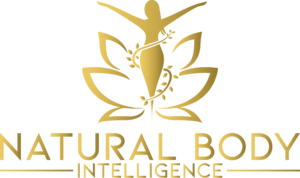The liver is one of the most remarkable organs in the human body. It works around the clock to detoxify and eliminate waste — without the need for extreme interventions. Yet, many people are drawn to dramatic “liver flush” protocols that promise to cleanse the liver using large amounts of oil, citrus juice, and sometimes apple juice. From a Natural Hygiene perspective, these flushes are not only unnecessary but may be counterproductive.
The Liver Is a Self-Cleansing Organ
Natural Hygiene recognises that the body, when supported properly, is fully capable of keeping itself clean and healthy. The liver filters toxins and metabolises waste every day. It does not require provocation by oil or acid to function effectively. In fact, such forced interventions only stress the system rather than support it.
Health is not achieved by applying more irritants, but by removing the real causes of toxemia — such as poor diet, chronic stress, stimulants, and environmental toxins.
What Are Those “Stones,” Really?
After performing a liver flush, many people claim to pass green or yellow “stones.” However, laboratory analysis has shown these are not actual gallstones. Instead, they are soft, soap-like clumps formed from a chemical reaction between olive oil, bile, and digestive juices. This process is known as saponification, where fats and alkaline substances form waxy, fatty blobs in the intestines.
These blobs often appear in the stool and give a false impression that the flush has successfully expelled gallstones. But in reality, the body has simply reacted to an unnatural overload of fat.
High Fat Loads Are a Shock to the System
One of the most concerning elements of a liver flush is the ingestion of a large quantity of oil — often half a cup or more. The human body is not designed to handle such a concentrated fat load in one go. This can place immense pressure on the liver, pancreas, and gallbladder.
Symptoms like nausea, diarrhoea, abdominal cramping, and — in some cases — actual gallbladder attacks can occur, especially in those with existing health issues. Rather than promoting healing, such practices introduce unnecessary strain.
Apple Juice: Sugar Overload
Many flush protocols also recommend drinking large amounts of apple juice in the days leading up to the flush. While apples themselves are a healthy, hydrating fruit, isolated juice in excess is another matter.
Apple juice is high in fructose, a form of sugar that can spike insulin levels, feed yeast overgrowth such as candida, and contribute to blood sugar imbalances. Natural Hygiene promotes the consumption of whole, fresh fruits as part of a balanced diet — not excessive amounts of juice consumed in isolation.
Temporary Symptom Relief Is Not True Healing
It’s common for people to report feeling lighter or more energised after a flush. This may be due to the body expelling some waste or the placebo effect of believing they’ve done something beneficial. But short-term symptom relief is not the same as true healing.
True health comes from eliminating the root causes of disease — such as poor food combining, overeating, toxic exposures, inadequate rest, and unresolved emotional stress. Liver flushes do not address these deeper issues and may even mask them temporarily.
It Encourages a Mentality of Dependence
Perhaps one of the most overlooked dangers of liver flushes is the psychological dependency they create. People can become convinced they need to do regular flushes to stay healthy, rather than learning to trust their body’s innate intelligence.
Natural Hygiene offers a radically different approach — one of self-reliance, simplicity, and respect for the body’s natural processes. By living intelligently and removing the true causes of toxemia, the body can heal and thrive without invasive or uncomfortable detox rituals.
Conclusion
Rather than relying on liver flushes and other extreme protocols, the Natural Hygiene path encourages us to support the body through rest, proper nutrition, clean environments, and emotional balance. The liver already knows how to do its job. The best support we can offer is to stop interfering.


